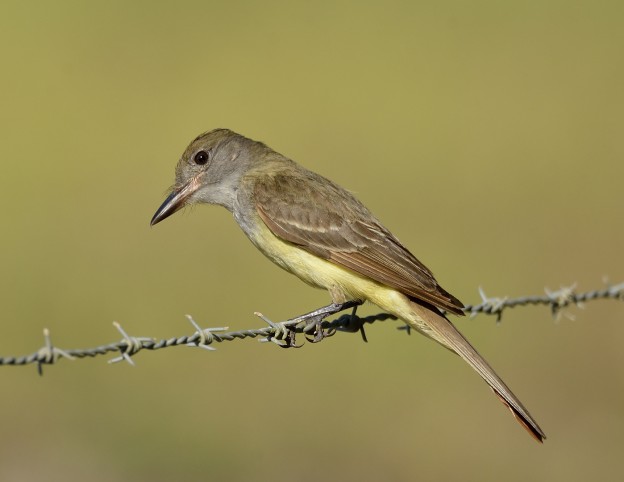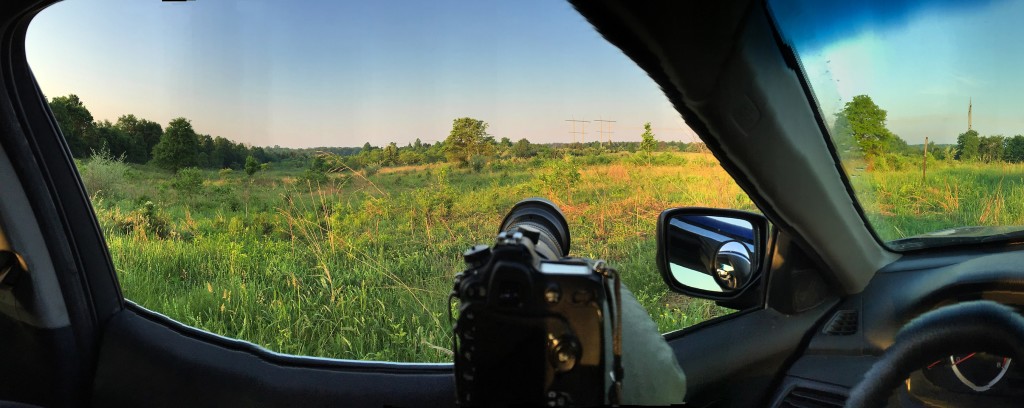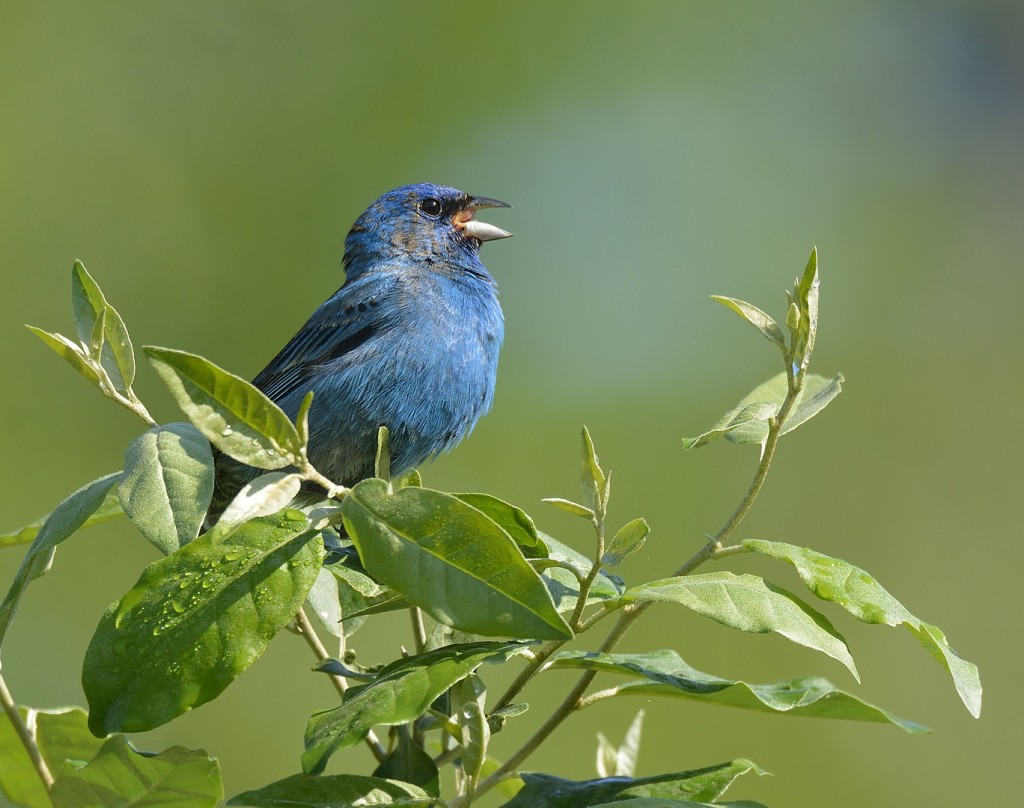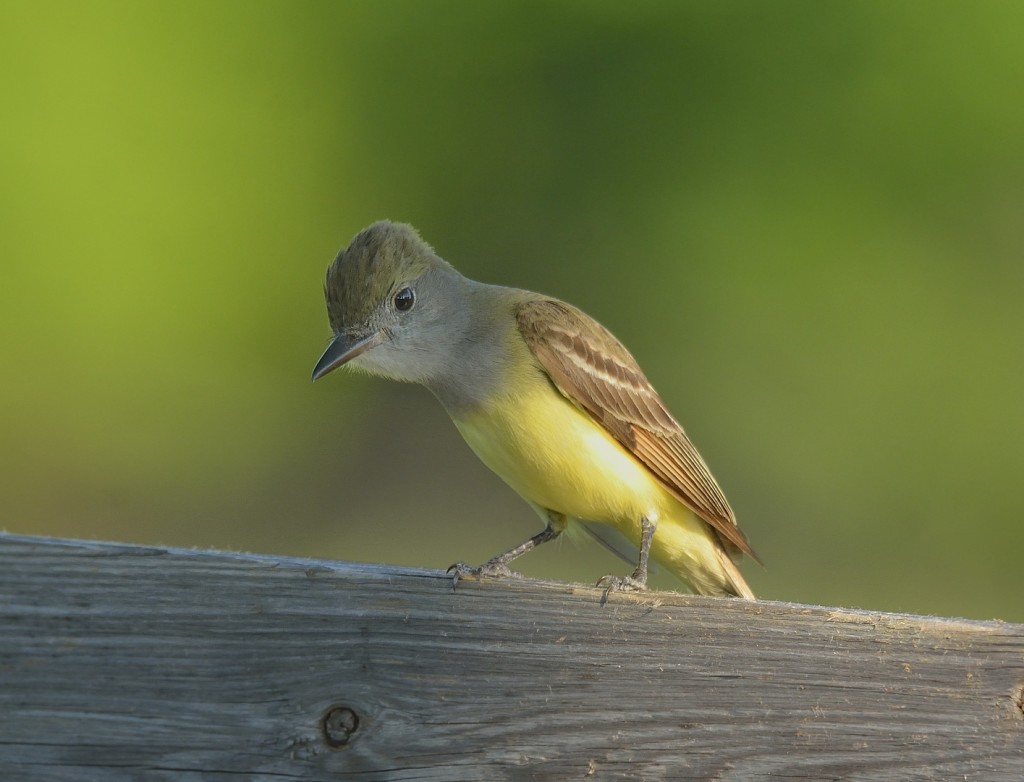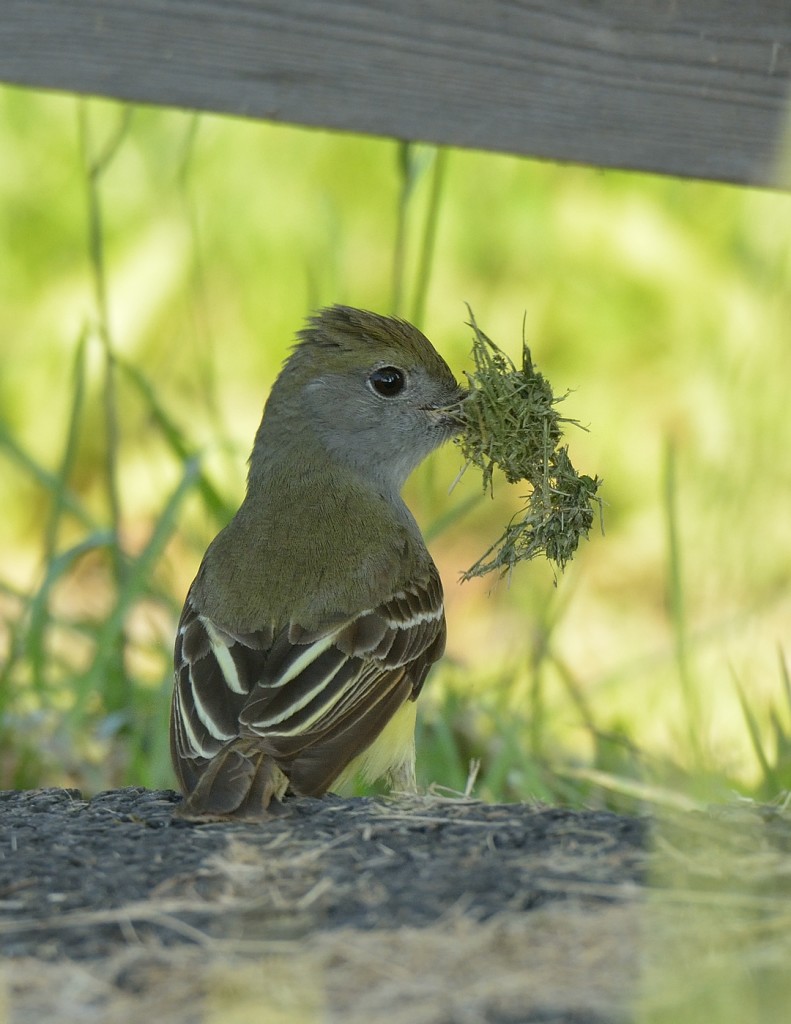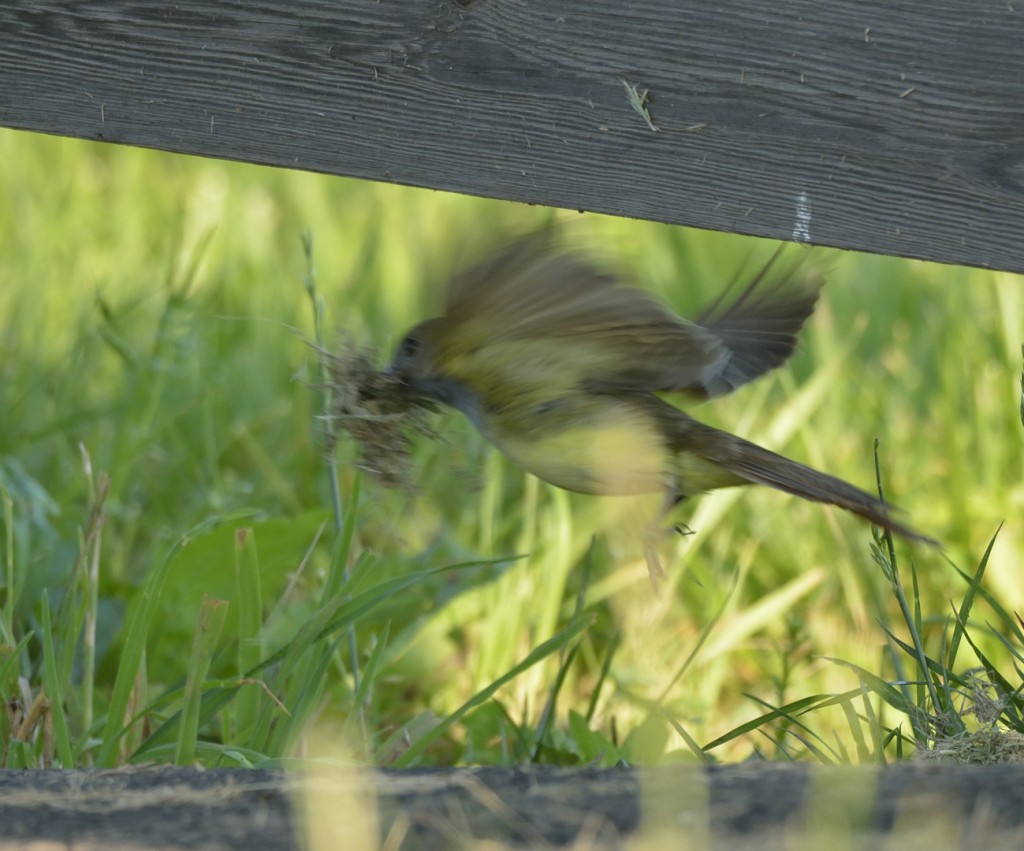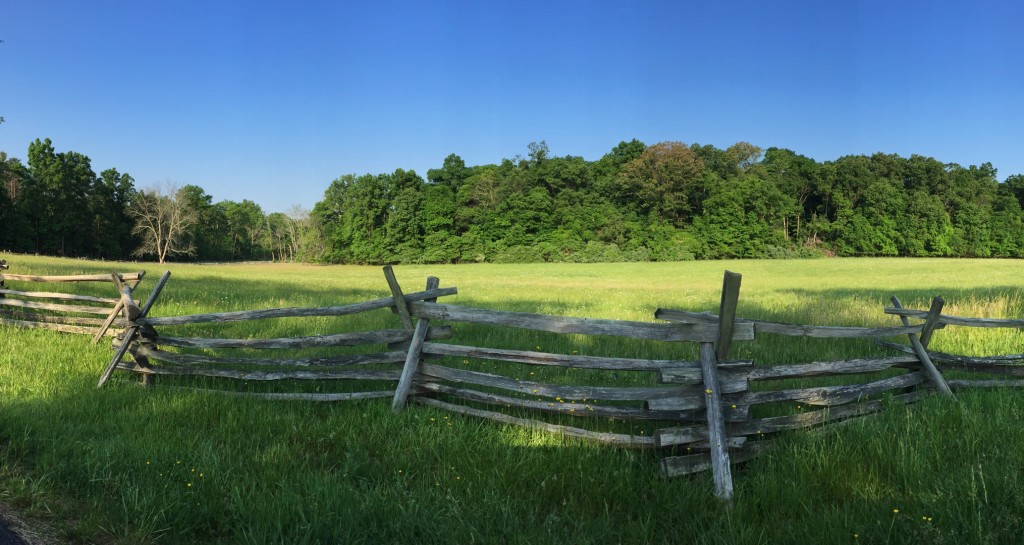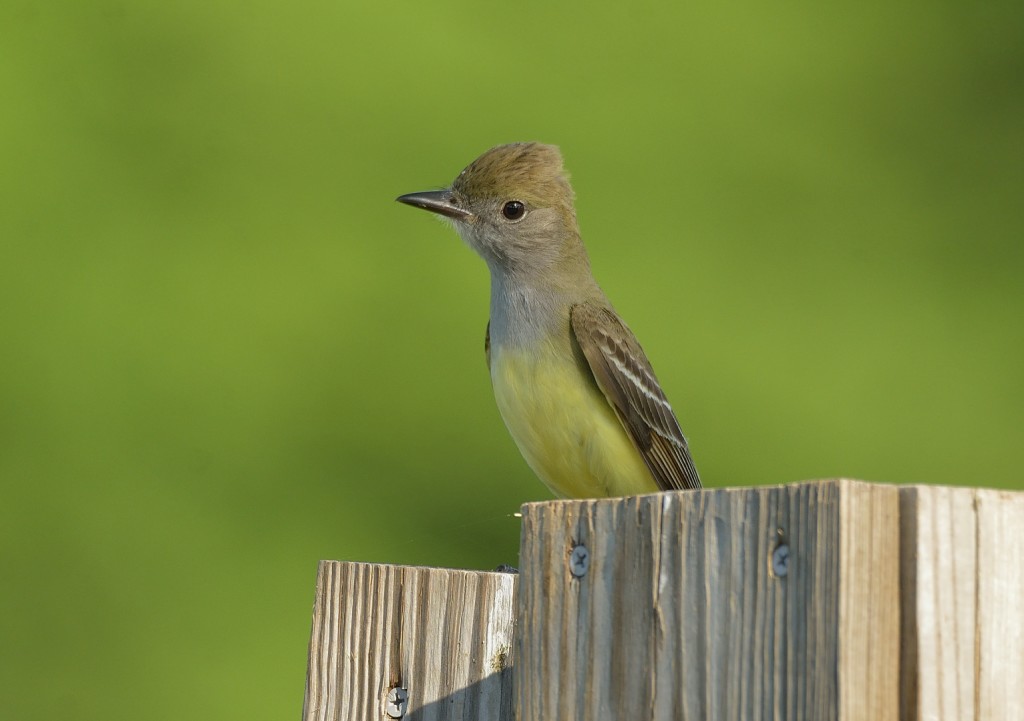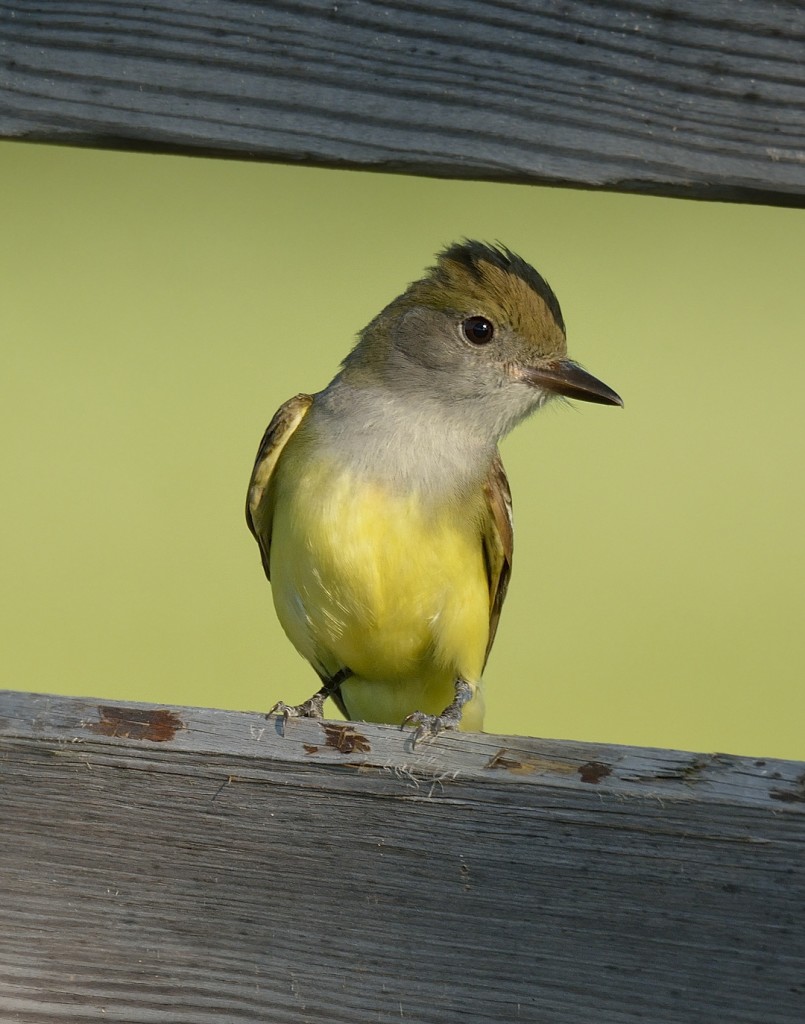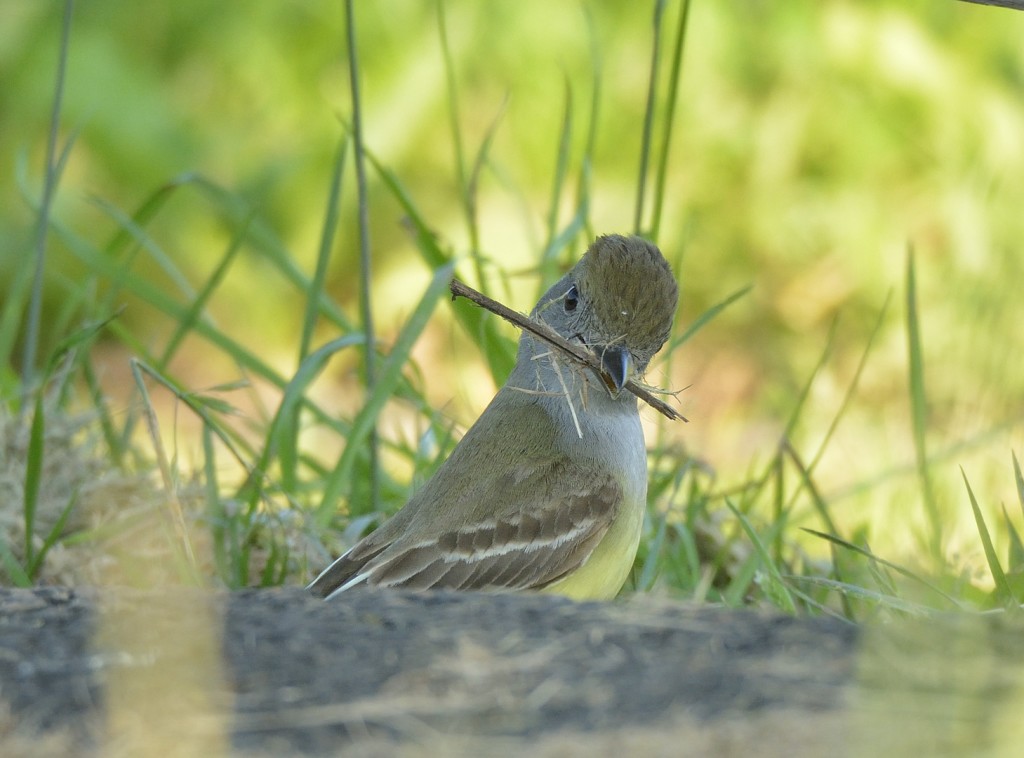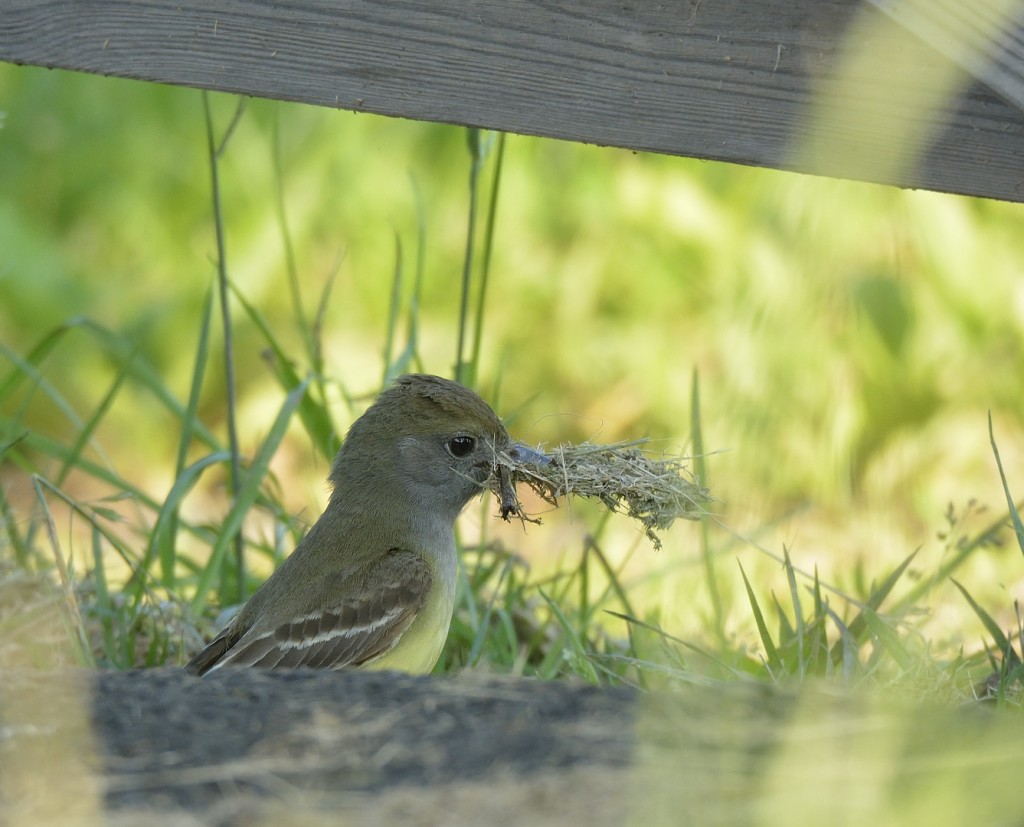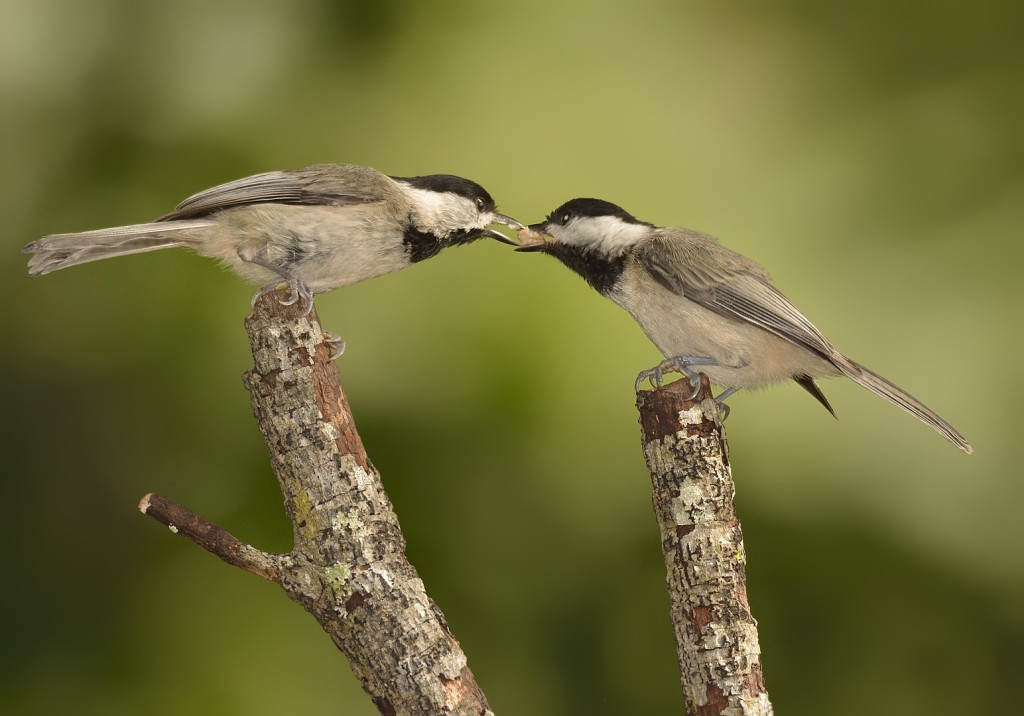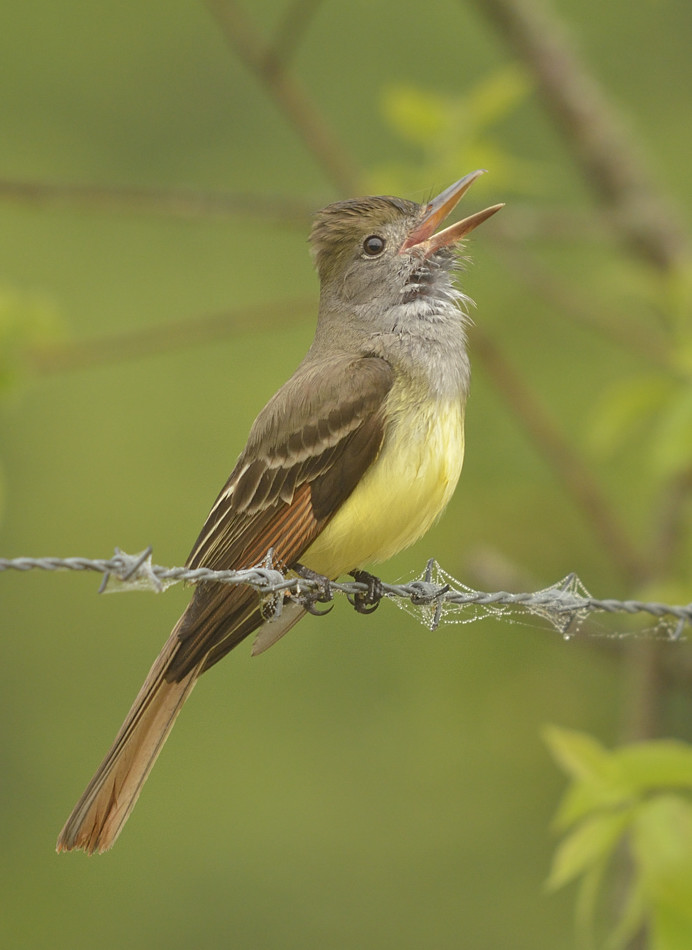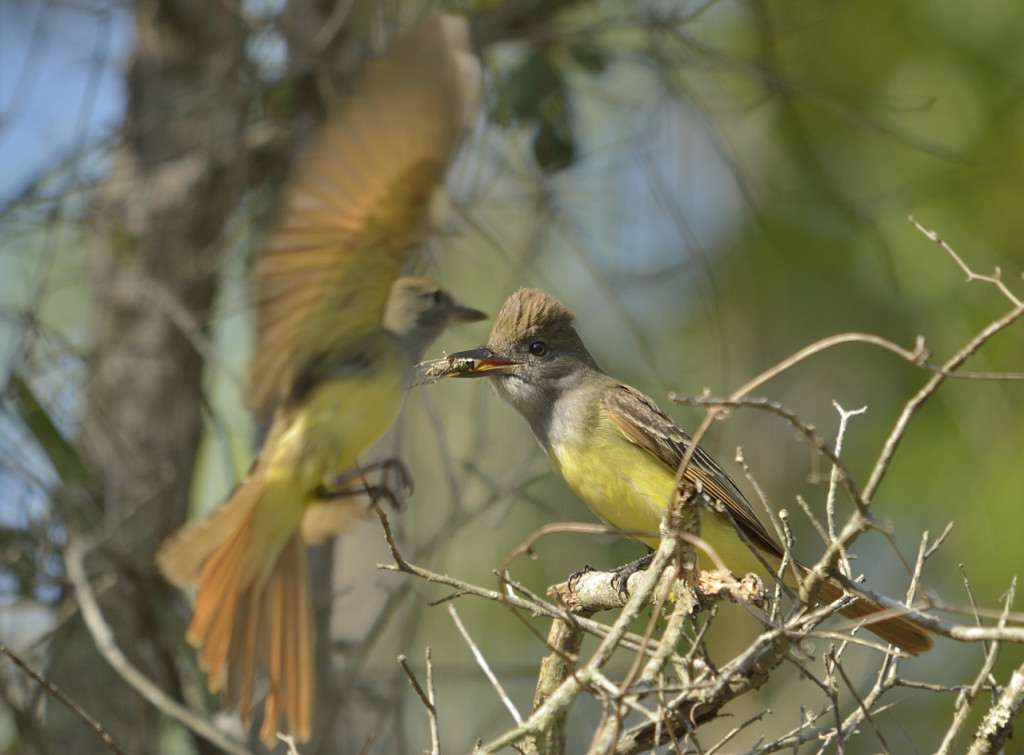
Great crested flycatchers are monogamous, and strongly bonded. I nearly always see them traveling in pairs. That doesn’t mean this male is going to share his cicada with the mate, though.
June 1, 2016
Birds are good parents. Few other comparable taxa of animals, vertebrate or invertebrate, routinely provide a similar level of parental investment and care. Mammals rival them; nearly all mammals retain developing embryos until birth, and provide lots of nurture and resources to the young once born (or hatched in the case of the monotremes). Lactation is a physiologically demanding adaptation, but the costs are borne solely by mothers, except for a couple of bizarre cases in which male mammals lactate. In mammals as a group, less than 5% of species show any male parental care. To be sure, there is huge variation in the degree of male parental involvement in birds, ranging from none in promiscuous, lekking species like sage grouse and manakins, to complete male care in polyandrous birds like phalaropes, where female involvement in reproduction ends with the laying of eggs. Still, on the whole, male birds are far more involved in providing parental care than in mammals.
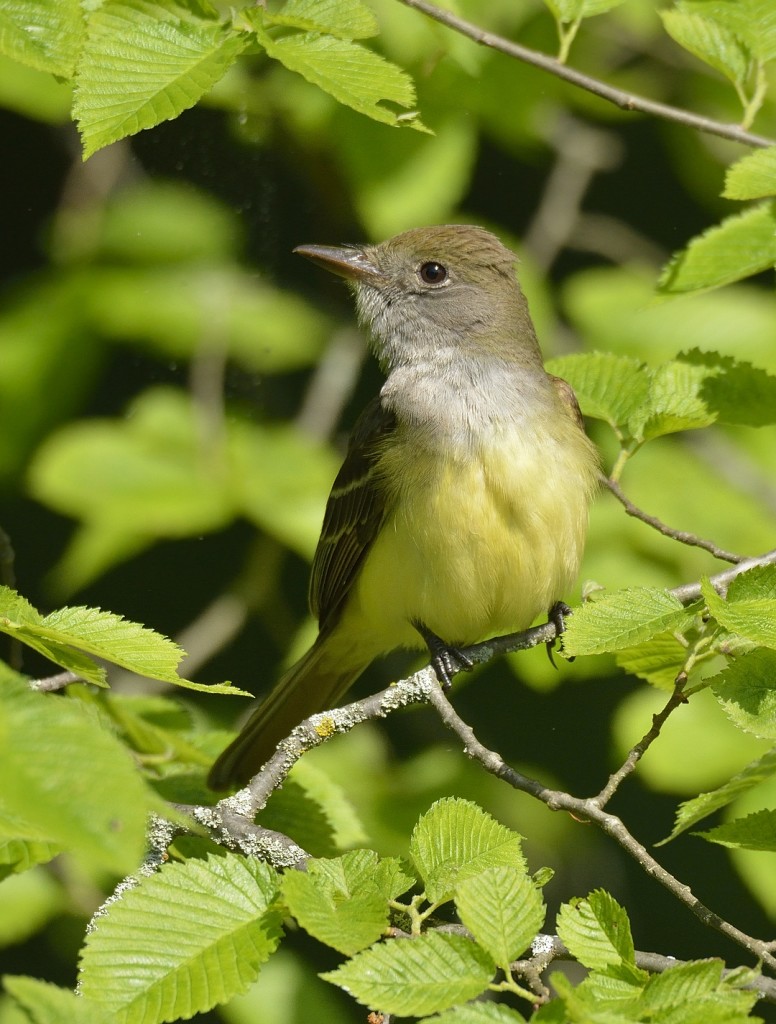
Great crested flycatcher from Manassas National Battlefield Park. This species is monomorphic; the only way to differentiate males and females is by behavior.
I got a fascinating glimpse into the allocation of parental duties in great crested flycatchers while birding in northern Virginia last week. These observations raise a number of questions about the significance of the male’s apparent participation in nest-building – is he really helping the female, which would constitute true parental investment, or is he simply acting in self-interest to protect his own fitness by preventing access by other males to his mate? I’ll return to those questions in a moment.
Quite likely I wouldn’t have seen these neat behaviors in Florida, though they certainly occur here as well. There is a huge difference between my birding tactics in Florida and Virginia.
I’m not a particularly patient birder or photographer. I do much of my birding and photography from the car, for reasons that are obvious to anyone who knows me. Run and gun is my preferred style. If something isn’t happening at a particular site within 5 minutes or so, I tend to move on. In the places I bird around DeLand, like Tiger Bay State Forest or Ocala National Forest, there is lots of habitat, good drivable roads, and few people. There is no cost to changing locations.
Northern Virginia is a different beast entirely. I return to Manassas, where I mostly grew up, once a year, usually soon after the spring semester has ended, to see my Dad and experience one of the most awesome wildlife spectacles on the planet – the explosion of breeding birds in temperate habitats. At this time of year, evidence of breeding birds is everywhere, in nearly every available habitat. It’s hard to find a location where you can’t hear males of at least a half-dozen species singing, particularly early in the morning. In many habitats, the diversity is far higher. Males are proclaiming and defending territory, and females are finding nest sites and building nests, sometimes with the assistance of their male partners, sometimes without. At this time of year, everything birds are doing is related somehow to reproduction.
Access to good birding habitats in northern Virginia is a bit more problematic. The entire northern Virginia/Washington D.C./southern Maryland area is one gigantic megalopolis, and remaining natural habitats are becoming more and more fragmented and isolated as development proceeds unabated. For me, birding in northern Virginia requires an additional element of planning – travel between one site and another. It can be horrendous. Birding trips involving multiple locations require careful thought about when and how to move from one site to another to minimize the soul-numbing experience that is northern Virginia traffic.
Manassas National Battlefield Park is 5000+ acres of birding heaven, surrounded by the metastasizing growth of new development hell. Two major commuter arteries, Routes 234 and 29-211, bisect the park. The intersection of 234 and 29-211 is at the center of the park, and marks the location of Stone House, one of the most iconic landmarks of the park. On weekday mornings, between about 6 and 10 a.m., this intersection becomes a huge parking lot, as backups a mile or more long build up. Driving between one site and another within the park can become a nightmare. So my tactics shift. In the parlance of foraging ecology, I switch from a widely-ranging forager to a sit-and-wait predator. My birding consists mostly of staying at one spot for much longer periods of time to avoid driving. This approach probably leads me to see things I wouldn’t have seen using the run-and-gun approach.
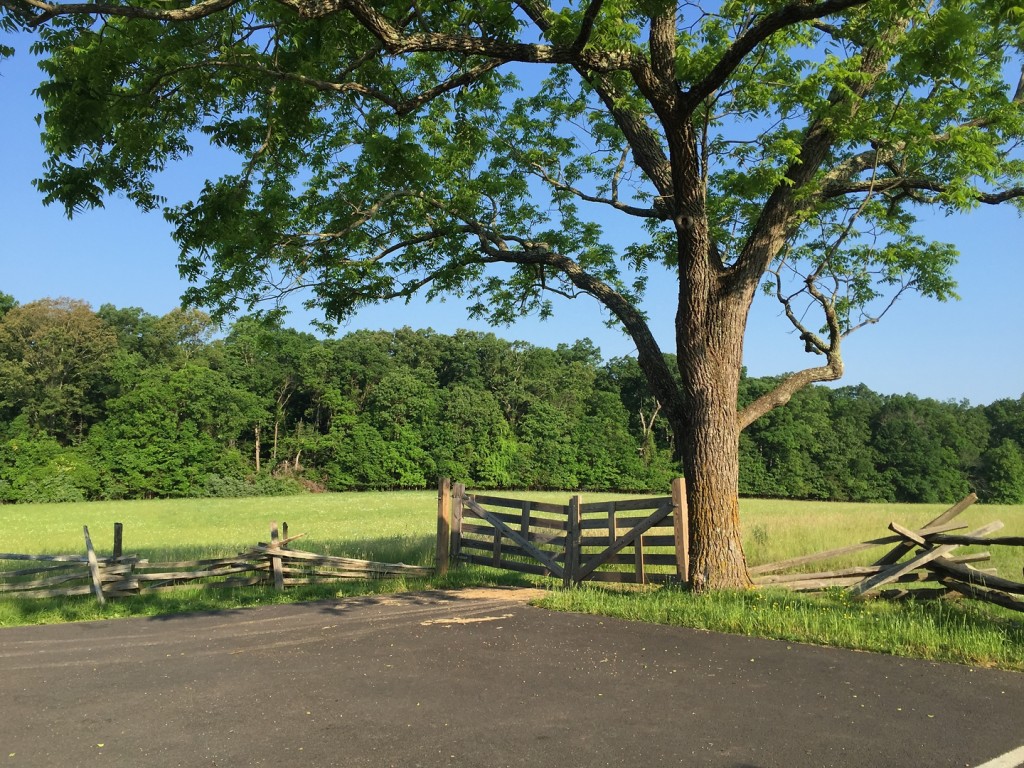
The parking area at Battery Heights. The female great crested flycatcher was collecting nesting material from the area around the gate.
Battery Heights is one of my favorite spots in the park. This was an important Union artillery placement during the Battle of Second Manassas. Today, a small, peripheral parking lot allows access to a grove of black walnuts, a couple of 12-pound Napoleon artillery pieces, and some signage, all surrounded by beautiful meadows and woodlands. Infrequently visited by all but the most die-hard of battlefield enthusiasts, I can sit here for a half-hour or more (an eternity for me to stay in one spot) and just wait for cool shit to happen. The walnut grove has turned up orchard and Baltimore orioles in the past; eastern bluebirds nest in the bores of the cannons, and chipping sparrows are nearly always singing nearby. Robins nest in the area. Eastern meadowlarks nest in the pasture. The nearby woodlands are home to typical forest species – I occasionally hear scarlet tanagers and wood thrushes singing from those nearby woodlands. In short, it’s a happening place for birds in spring. Curiously, if I’m to visit this spot in the morning, I have to skirt the periphery of the park and approach it on 29-211 from the west. Battery Heights is about 2 miles west of the aforementioned intersection of 234 and 29-211, which is one of the focal points of traffic hell during the morning drive. If I were to drive directly through the park to reach Battery Heights from the east, I’d have to contend with a drive time of an hour or more. To travel a couple of miles.
So there I was at Battery Heights on Saturday morning, chilling and grooving on the birds. An orchard oriole was singing nearby. I was concentrating on that bird, hoping for a photo op, when I noticed a great crested flycatcher swoop into the corner of the parking lot. She perched briefly on a fence gate, and then dropped to the ground. The area around the gate had been mowed recently, and there was an abundance of fine grass debris from the mowing. She was collecting nesting material. She snatched several bundles of fine grass until her beak was stuffed, then flew away. Nothing that unusual or noteworthy there, though I don’t often see great crested flycatchers come down to the ground. A few moments after the female flew in, though, I saw another flycatcher fly in behind her and land in the walnut tree above the spot where she was gathering nest material. When she flew away, he followed.
She flew a couple hundred meters across the meadow towards the deciduous forest to the west, where the pair was nesting. That seems like a long way to travel to gather some plant materials, but apparently her specific needs for nest-lining material were quite stringent. Think about that for a moment – amidst all the different types of plant fibers and materials that are present in an eastern deciduous forest, she still made the decision to travel hundreds of meters across an open pasture, where she is certainly more vulnerable to predation by raptors like Cooper’s hawks. That’s a bird with a very specific need to fulfill.
One of the comforting regularities of bird behavior is its regularity. I kind of figured that she, and her mate, might return for more material, so I edged a little closer to the corner of the parking lot after the pair left. Sure enough, a few minutes later, I saw her approaching across the pasture. She swooped down to the gate again, eying me a bit longer than before. The male followed a few seconds behind, and once again perched above her in the walnut. I stayed in that spot for a half-hour or so, during which time the pair returned 5 more times to gather nesting material. Like clockwork. Nesting birds are fixated on their goal. Never did the male come down to the ground or do anything tangible to aid the female in her work. He just followed her around. But why?
In retrospect, it isn’t so surprising that the female flycatcher was highly fixated on a specific type of nesting material. One of the better-known peculiarities of great crested flycatcher nesting behavior is their compulsion to include a shed snake skin in the lining of their nest, which they build inside a tree cavity. Decades ago, when I kept way too many rat snakes as pets, I placed a shed skin of a yellow rat snake in my front yard, draped over one of the dead snags near my bird feeder. No more than an hour passed before I heard a pair of great crested flycatchers making a ruckus in the front yard. As I watched from my living room, the female flew to the snag, surveyed the skin for a moment, fussed with it for a minute or two, then unwrapped it and flew away with it. I was able to snag a couple of low-light photos through an open window. More importantly, I thought, I had discovered a way to get phenomenal close-ups of great crested flycatchers during breeding season. Simply bait them with a snake skin, yeah? I’ve never observed that response to a snake skin again, though I’ve tried it numerous times.
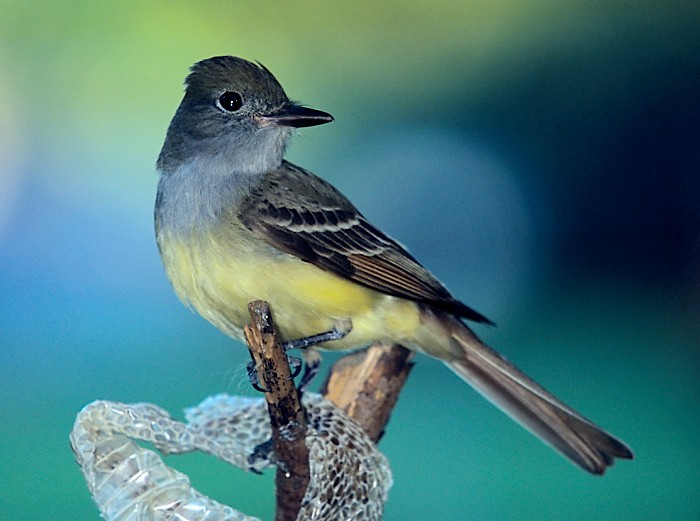
The female flycatcher from my DeLand front yard claiming her snake skin. Scanned from a transparency.
Why a snake skin? Some experimental evidence suggests that the presence of a snake skin deters visitation by flying squirrels, which can prey on the eggs and nestlings of the flycatchers.
So back to the question of the male’s role in all of these behaviors. Basically, he does nothing other than accompany the female. According to Cornell’s Birds of North America Online account of great crested flycatcher nesting behavior, males always follow the female around while she is building the nest, but never contribute directly to collecting materials or nest-building. So what is he doing?
Reproductive biologists make a distinction between the forms of time/resource/energy inputs into reproduction, labeled as parental investment vs. parental care. Parental investment refers to energy or resource expenditures by either parent that increase the chance of successfully reproducing, from the very beginning of the reproductive process (including formation of eggs and sperm) until the young have achieved complete independence. Parental care is a particular form of parental investment, and refers to time/energy/resources expended after eggs are laid or offspring are born. So the behaviors of both male and female in collecting nest material may be parental investment, but not parental care, since no eggs or hatchlings are yet present. The female’s nest-building behaviors contribute directly to offspring success, so there’s no question that her behavior constitutes parental investment. Females provide more parental investment and parental care than males in most bird species.
Here’s the question that’s bugging me – is the male flycatcher’s behavior during collection of nesting material really parental investment? The female’s behavior surely is, but do the male’s behaviors in any way contribute to nest building or the subsequent success of the offspring?
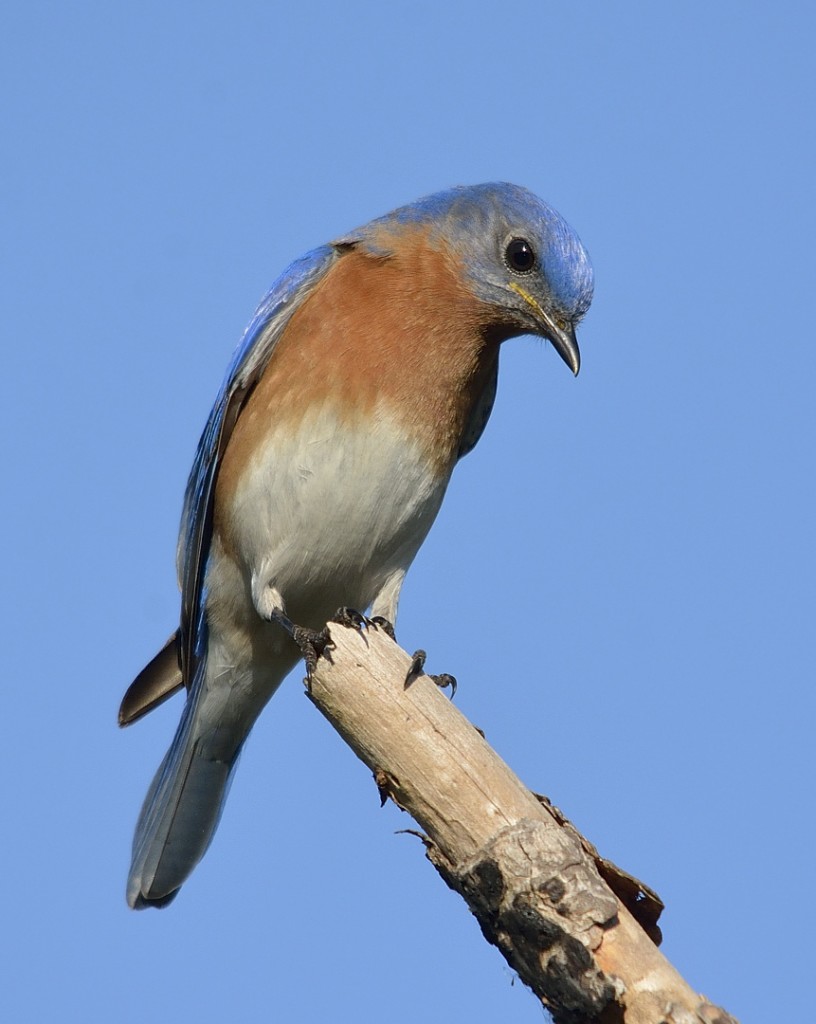
Eastern bluebirds are poster children for monogamy in birds, yet between 25-50% of nests have offspring sired by more than one male.
The alternative explanation is that the male is simply being selfish, protecting his own fitness. One of the remarkable findings of avian reproductive biology over the last several decades is the ubiquity and surprisingly high frequency of infidelity between what we have traditionally called monogamous birds. Although their basic social unit during the breeding season is the pair, in many or most songbirds, both males and females regularly cheat on their mates. In some species, up to 25% of the young in the population have been fathered by a male other than the bonded mate of their mother. Apparently there are no data on the frequency of extra-pair copulations or extra-pair young in great crested flycatchers.
So male birds are generally very attentive towards their mates during the period up until the eggs are laid. It takes only a minute or less for a female to pop a quickie with a neighboring male, so the bonded male must be constantly vigilant during this time. So is that the only reason he’s following her around? Stalking her, really. A rather different interpretation than the idea that he is somehow helping and protecting her during her nest-building phase. If the only purpose of his attendance is to prevent being cuckolded by his mate, then his activities aren’t really contributing to the success of the offspring at all. And what he is doing doesn’t constitute parental investment.
Loving, protective mate or jealous stalker? You be the judge.
